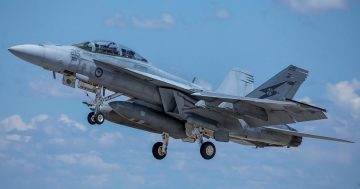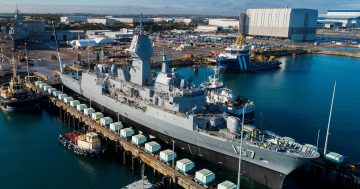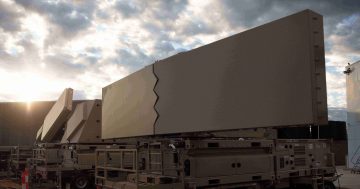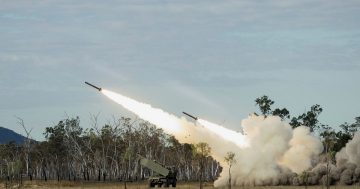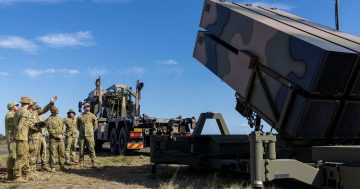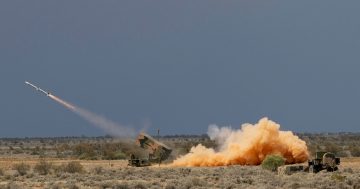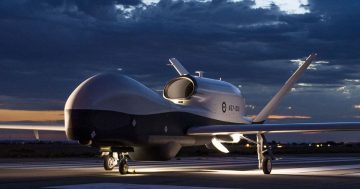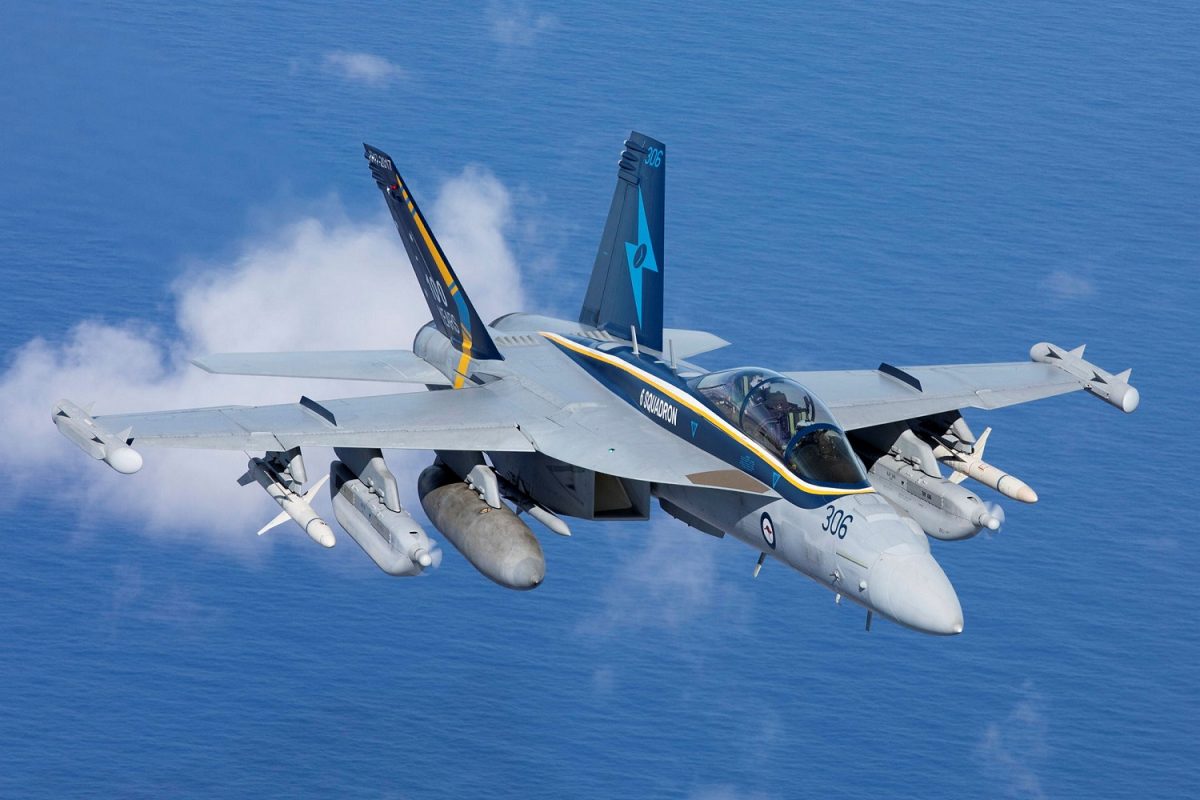
A Boeing EA-18G Growler of the Amberley-based 6SQN carrying ALQ-218 pods on the wingtips, AGM-88 HARM missiles on the outboard wing pylons, and ALQ-99 jammer pods on the mid-wing pylons. Photo: ADF.
Canberra-based CEA Technologies has been awarded a $277 million contract by the Department of Defence to build advanced radar equipment for two electronic warfare training ranges in Queensland and the Northern Territory.
The contract is part of Defence’s Project AIR 5439 Phase 6 Advanced Growler program which will upgrade the sensors, jammers, weapons and training ranges for the Royal Australian Air Force’s fleet of 12 Boeing EA-18G Growler electronic attack aircraft.
Designed to disrupt, jam, or destroy adversary radar and communications systems, the Growler carries advanced onboard sensors and under-wing jammer pods. It is considered the world’s most capable electronic attack aircraft. With 95 per cent commonality with the F/A-18F Super Hornet, the RAAF acquired 12 Growlers from the US Navy in 2013 to add to its 24 Super Hornets, and the final aircraft was delivered in 2017. One Growler was destroyed in a take-off mishap in the US in 2019, but that will soon be replaced to bring the fleet back to 12.
CEA Technologies is the designer of world-leading advanced electronic scanned array radar systems and has air defence radars being integrated with the Australian Army’s new Project LAND 19 Phase 7B Short-Range Ground-Based Air Defence (SRGBAD) system and air and surface-scanning systems fitted to the Royal Australian Navy’s ANZAC class frigates. It has also been tagged to supply the primary radar systems for the Navy’s nine new Hunter class frigates currently under construction and the RAAF’s forthcoming Project AIR 6500 Phase 1 Integrated Air and Missile Defence System.
For this project, CEA will supply radar systems that are designed to simulate advanced adversary threat systems for the Growler’s training ranges, located near Oakey in Queensland and on the vast Delamere Air Training Range near Katherine in the NT. RAAF Growler crews will fly ‘against’ these systems to develop tactics and crew proficiencies to disrupt, jam and destroy actual threats if necessary.
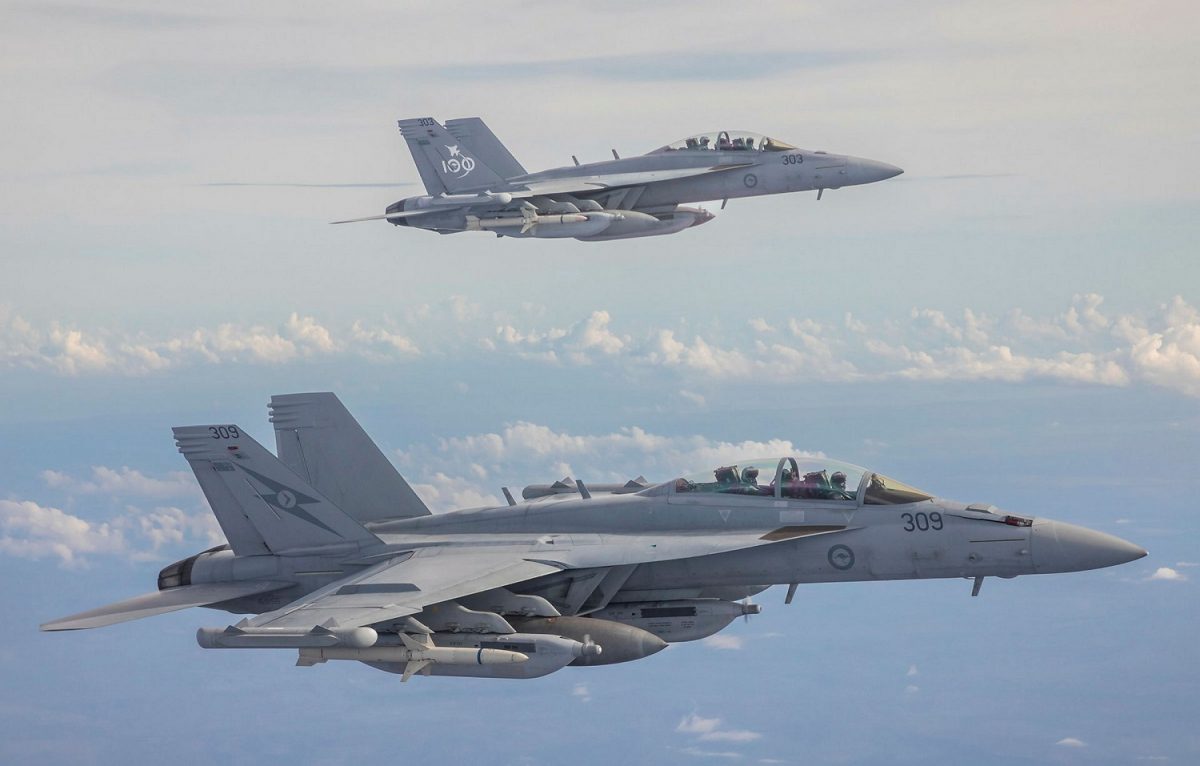
Two RAAF EA-18G Growlers in formation over the Northern Territory. Photo: ADF.
“The Albanese Government is working closely with defence industry partners and Australian companies will be involved as much as possible throughout the life of this project,” Minister for Defence Industry Pat Conroy said in a 6 February statement.
“I’m proud that this project will continue to develop Australia’s own CEA Technologies, a world-leading radar technology company. We are delivering leading-edge technology the RAAF needs to face an increasingly complex and uncertain strategic environment.”
The Growler carries organic sensors which can pick up the transmissions from adversary radars or communications, and its underwing ALQ-99 jammer pods can send signals back to those systems at various power levels to either disrupt or jam them. The RAAF will soon replace the ageing ALQ-99 pods with the far-more advanced ALQ-249 ‘Next Generation Jammer’ (NGJ) jointly developed by the RAAF and the US Navy. These are expected to be capable of defeating the very latest adversary systems.
To maintain commonality with the US Navy’s much larger Growler and Super Hornet fleets for support and spares, the RAAF will upgrade its Growler, and likely, its Super Hornets, with new data processors, advanced cockpit displays, more advanced radar modes, and subtle stealth treatments and coatings.
Another enhancement for the RAAF’s Growler fleet is the acquisition of new Northrop Grumman AGM-88E/G Advanced Anti-Radiation Guided Missiles (AARGM) which are designed to acquire and home in on adversary radar or communications signals. Whereas older anti-radiation missiles could be defeated by turning the target radar off, these newer missiles have greater range and can acquire the GPS coordinates of the target system themselves or from a feed from their launch aircraft and continue to press the attack.
The Growler is the RAAF’s first electronic attack aircraft and is operated by No 6 Squadron at RAAF Base Amberley near Brisbane. Other ADF aircraft carry electronic support measures (ESM) and radar warning receiver (RWR) systems which allow them to detect and classify adversary systems that may be searching for or tracking them, and most modern western combat aircraft since the 1970s have carried onboard or podded jammers capable of defending against attacking enemy missiles.












